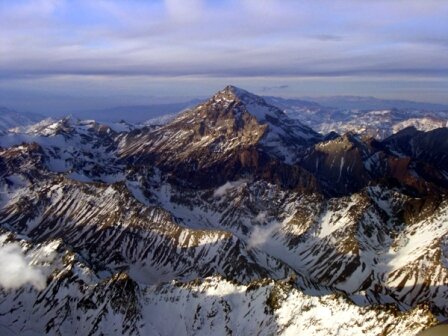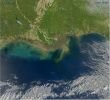One of these following facts about the Andes Mountain should give you much information about this mountain range. The Andes Mountain is the longest continental mountain range in the world. It is a continual range of highlands along the western coast of South America. This range is about 7,000 km (4.300 mi) long, about 200 km (120 mi) to 700 km (430 mi) wide, and of an average height of about 4,000 m (13,000 ft). The Andes extend from north to south through seven South American countries: Venezuela, Colombia, Ecuador, Peru, Bolivia, Chile and Argentina. Furthermore, to get to know more about this mountain range, here are some facts about the Andes Mountain you might be interested in.
Facts about the Andes Mountain 1: Several Ranges
Along its length, the Andes is split into several ranges, which are separated by intermediate depressions. The Andes is the location of several high plateaux, some of which host major cities such as Quito, Bogota, Arequipa, Medelin, Sucre, Merida and La Paz.
Facts about the Andes Mountain 2: Highest Mountain
The Andes is the world’s highest mountain range outside of Asia. The highest peak, Mount Aconcagua, rises to an elevation of about 6,962 m (22,841 ft) above sea level. The peak of Chimborazo in the Ecuadorean Andes is farther from Earth’s center than any other location on Earth’s surface, due to the equatorial bulge resulting from Earth’s rotation.
Facts about the Andes Mountain 3: Name
The etymology of the word Andes has been debated. The major consensus is that it derives from the Quechua word anti which means “east”as in “Antisuyu” (Quechua for “east region”),one of the four regions of the Inca Empire.
Facts about the Andes Mountain 4: Modern Andes
The formation of the modern Andes began with the events of the Triassic when Pangea began to break up and several rifs developed. It continued through the Jurassic Period.
Facts about the Andes Mountain 5: Volcanism
The Andes range has many active volcanoes, which are distributed in four volcanic zones separated by areas of inactivity. The Andean volcanism is a result of subduction of the Nazca Plate and Antarctic Plate underneath the South American Plate.
Facts about the Andes Mountain 6: Climate
The climate in the Andes varies greatly depending on latitude, altitude, and proximity to the sea. Temperature, atmospheric pressure and humidity decrease in higher elevations. The southern section is rainy and cool, the central Andes are dry.
Facts about the Andes Mountain 7: Flora
About 30,000 species of vascular plants live in the Andes with roughly half being endemic to the region, surpassing the diversity of any other hotspot. The small tree Cinchona pubescens, a source of quinine which is used to treat malaria, is found widely in the Andes as far south as Bolivia. Other important crops that originated from the Andes are tobacco and potatoes.
Facts about the Andes Mountain 8: Fauna
The Andes is rich in fauna: With almost 3,500 species, of which roughly 2/3 are endemic to the region, the Andes is the most important region in the world for amphibians. The diversity of animals in the Andes is high, with almost 600 species of mammals, more than 1,700 species of birds, more than 600 species of reptile, and almost 400 species of fish.
Facts about the Andes Mountain 9: Human Activity
The Andes mountains form a north-south axis of cultural influences. A long series of cultural development culminated in the expansion of the Inca civilization and Inca Empire in the central Andes during the 15th century. The Incas formed this civilization through imperialistic militarism as well as careful and meticulous governmental management.
Facts about the Andes Mountain 10: Agriculture
The ancient peoples of the Andes such as the Incas have practiced irrigation techniques for over 6,000 years. Because of the mountain slopes, terracing has been a common practice. Terracing, however, was only extensively employed after Incan imperial expansions to fuel their expanding realm.
Hope you would find those Andes Mountain facts really interesting, useful and helpful for your additional reading and your research.










 www.PortlandPayday.Loans
www.PortlandPayday.Loans